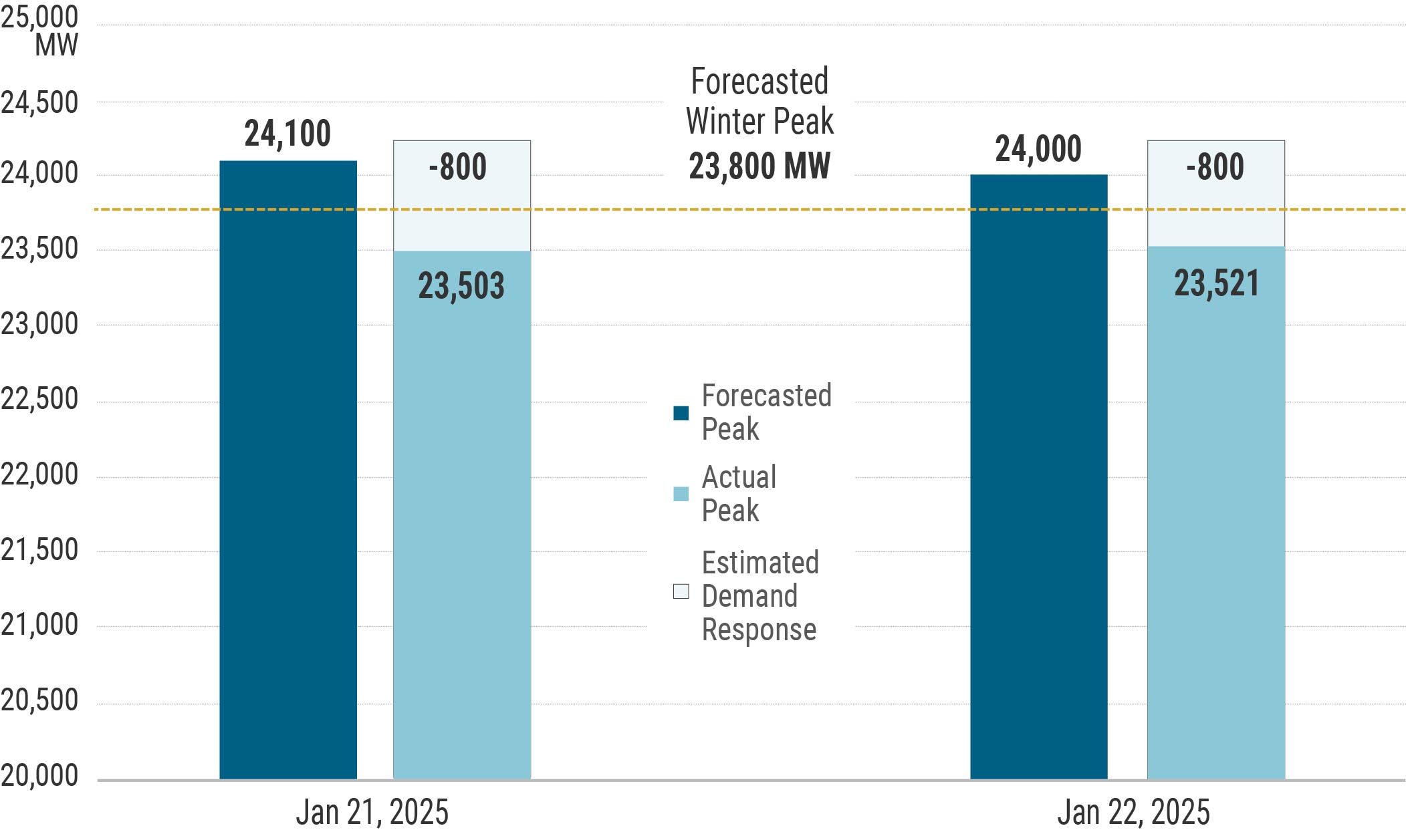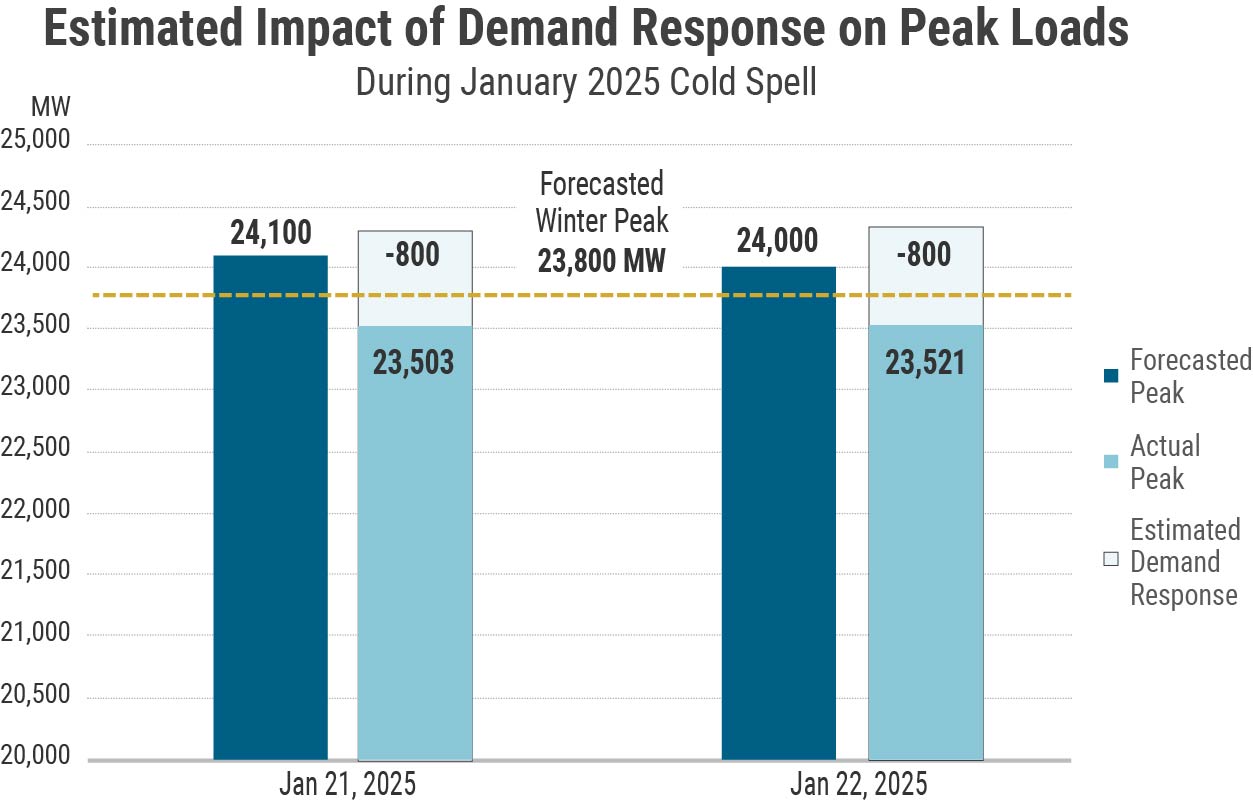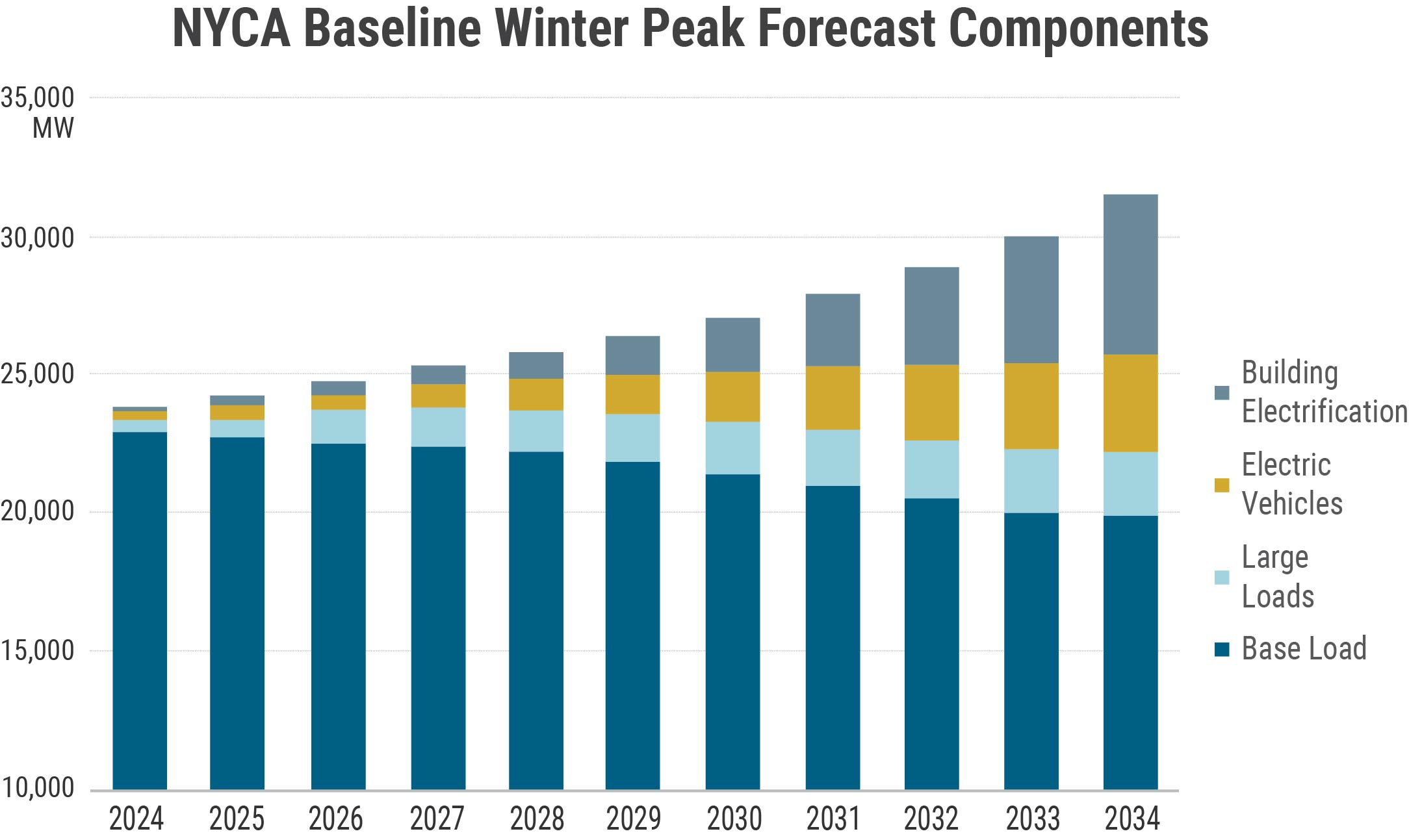January's Cold Spell Prompts Rare Response to Reduce Peak Demand

The cold spell that blanketed much of the country in late January required NYISO’s operations team to use an important resource that hasn’t been called on in winter for more than a decade: Demand Response (DR).
The NYISO’s Demand Response Program compensates eligible manufacturers, commercial buildings, colleges, and other energy-intensive entities, for reducing their electricity consumption during periods of high demand on the electric system.
In the week before the multi-day event, NYISO’s forecasters found that peak demand would rise above the projected winter peak forecast of 23,800 megawatts (MW). As the cold spell lingered over the state from January 20 through 23, average statewide high temperatures ranged from the low twenties to the mid-teens – far below seasonal averages.
To reduce demand on the grid and meet regulated reliability requirements, NYISO’s operations team activated the DR Program on January 21 and 22 across the entire state. 
"We were paying close attention to duration and severity of the polar vortex in the days leading up to the event impact here in New York. Based on the system conditions we saw near real time, it was necessary to activate demand response in the peak demand hours of each day,” said Aaron Markham, Vice President of Operations for the New York Independent System Operator.
When extreme winter weather hits New York, homes and businesses use more electricity from the grid to heat their homes and stay warm. Behind the scenes, NYISO’s operations team works diligently to dispatch energy resources to serve demand, communicate with generators and utilities, and coordinate with neighboring grid operators.
DR is a way for customers to actively participate in managing the electricity grid by adjusting their energy consumption. Electricity customers reduce or shift their electricity usage in response to economic signals or reliability signals to help balance the electricity supply and demand.
DR can help:
- Reduce peak demand: By encouraging customers to use less electricity during peak periods, DR helps prevent grid overload and potential outages.
- Lower electricity costs: Reducing the need for expensive, peak-load power plants.
- Improve grid reliability: By balancing supply and demand, DR helps ensure a more stable and reliable electricity grid.
- Facilitate the integration of renewable energy: DR can help manage the intermittency of renewable sources like solar and wind by allowing customers to shift their consumption when renewable generation is high or low.
Based on enrollment in the winter DR Program, the NYISO estimates that more than 800 MW of load reduction during the January events from resources enrolled in the Program’s two primary functions: Installed Capacity/ Special Case Resource program (ICAP/SCR) and the Emergency Demand Response Program (EDRP).
The last time NYISO activated a call for winter demand response was January 7, 2014, when New York’s all-time record winter peak demand record of 25,738 MW was set. According to a recent NYISO grid reliability study, winter demand is expected to rise by as much as 1,200 MW annually by 2030 due to the electrification of housing and transportation sectors and the addition of large loads.

While the use of DR in winter has been historically rare, NYISO’s operations team may need to activate this program with greater frequency as the grid in New York becomes a winter-peaking system.
